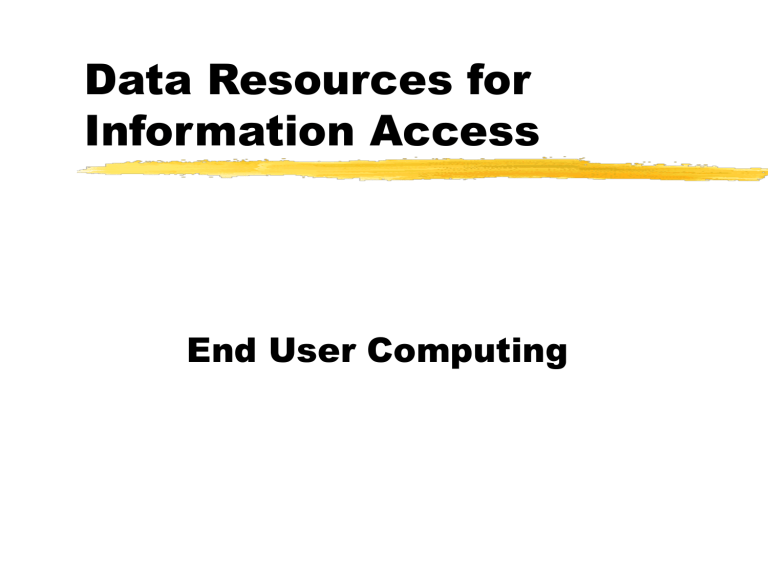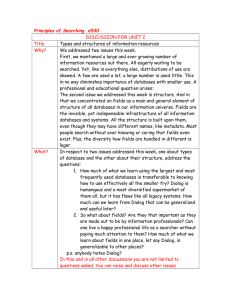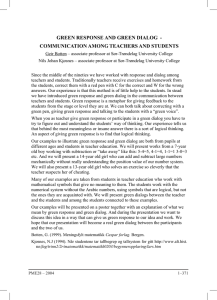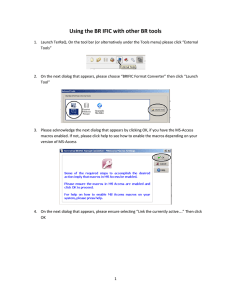PowerPoint Presentation - Data Resources for Information Access: End User Computing

Data Resources for
Information Access
End User Computing
End User Computing
Where the user does some of the programming
End User Computing
Data Model
Dialog
System Design Sequence
Develop Data Resources
Develop Dialog Structure
Attach Actions
Develop Detailed Models
End User Computing
Data Model
Dialog
Data Requirements
Operational Data
Historical Data
External Data
User Defined Data
Databases
Operational Data
Data Warehouses
User Defined Databases
Operational Databases: contain transaction data to support Online Transaction Processing ( OLTP ).
These databases contain
• large quantities of data
• one record for each business transaction
• real time data
Data Warehouses and Data
Marts contain summary and historical recordsto support Online Analytical
Processing (OLAP).
organized for a specific business unit
historical instances
summarized as appropriate
flexible, read only access
Data Models
Atomic databases (usually relational)
Rule models (for expert systems)
Image databases
Object libraries
Data Extraction Design
Organized for flexibility rather than efficiency
Small enough to fit on user devices
Supports historical data (time stamped vs real time)
Protect corporate master files
Reduces concurrency problems for distributed data
User Defined Databases
User managed
Not shared
Reside on clients
Data Generation
Extraction
Capture
Entry
Functions of Data
Management
Input
Quality Assurance
Storage
Maintenance
Retrieval
End User Computing
Data Model
Dialog
Dialog Purpose
Produce Output Representations
Enable User to Call Operations and Feed
Parameters to Them
Access Memory Aids
Provide Control Mechanisms
Objectives of Good Dialog
Promote man/machine symbiosis.
Identify Problem to be Solved
Identify Users for the System
Identify Functions to be Supported
Design Dialog
End User Computing
Data Model
Dialog
Program Architecture
The organization of code components
The objective of system architecture is to simplify maintenance by putting code together that will be changed at the same time
Architectural Philosophies
Requirements Driven
Data Driven
Dialog Driven
Event Driven
Traditional Design
Traditional Life Cycle Approach
Formal Methodologies
CASE Tools
Purchased Systems
New Approaches
RAD
Evolutionary Code
Object Oriented Design
End User Computing
Data Model
Dialog
Business Within a
Business
Most firms manage IT as a business within the business, with IT having its own
career paths
job descriptions
personality profiles
Aligning IT with the
Business
Technology
Excellence
(Systems)
IT
User
Business Profitability
(Applications)
End User Systems
Enhance customer decision making to
Identify problems in time to avoid them
Discover opportunities you would otherwise miss
End User Computing





